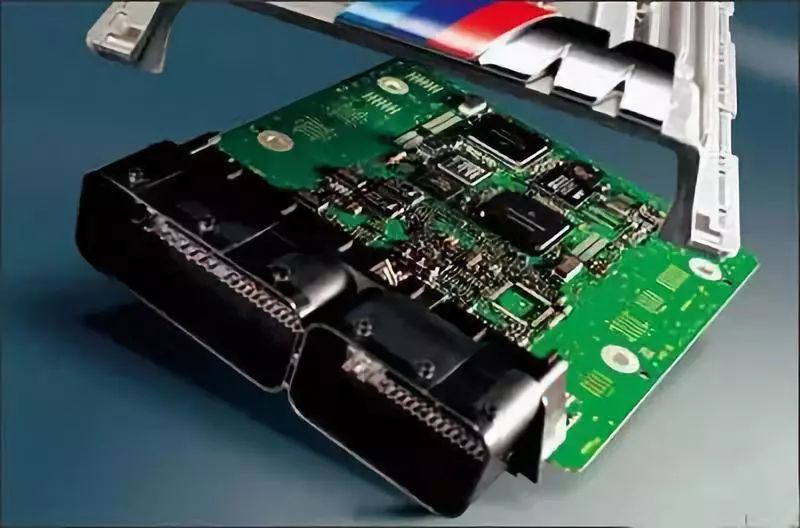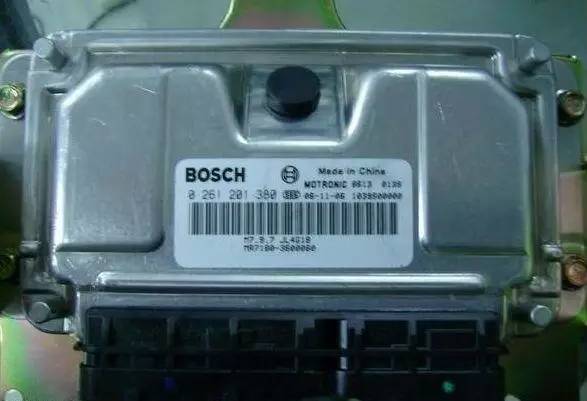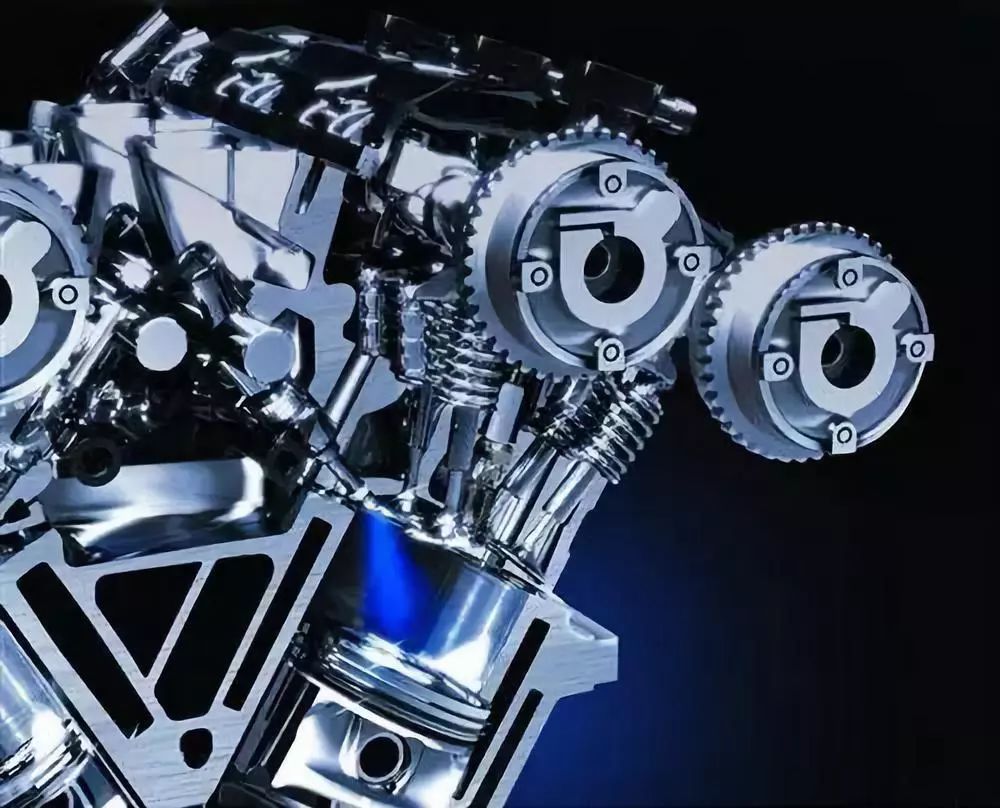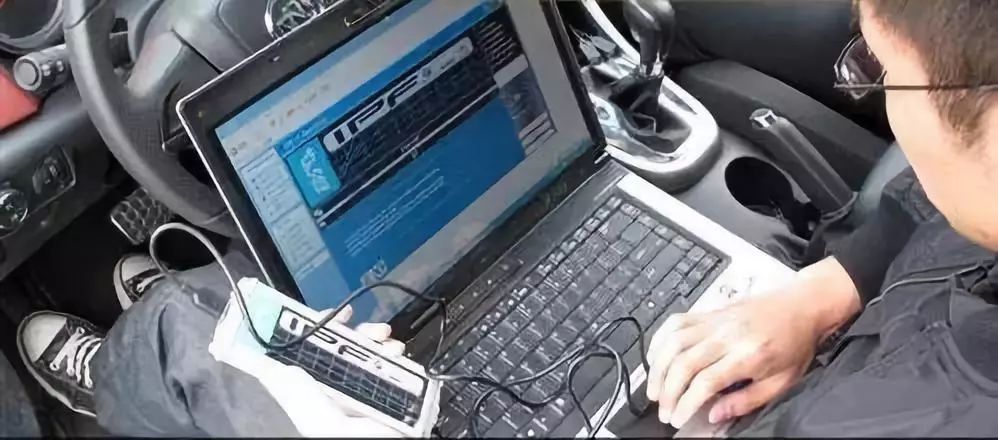Hi This is the 1995th article shared by Guoheng Assistant.If we compare the engine to the “heart” of the car, then the “brain” of the car should be the ECU. What is the ECU? How does it work? This article provides a detailed analysis.What is ECU?ECU has two full names, namely Engine Control Unit and Electronic Control Unit. It is not difficult to see that the former means “engine control unit” while the latter means “electronic control unit”.These are two concepts that are easily confused, and today we will mainly analyze the “Engine Control Unit”.
The Emergence of ECU
Before 1967, the fuel supply system of gasoline engines was managed by carburetors, which is completely different from today’s electronic fuel injection engines. Carburetors use the pressure difference before and after the throttle to draw fuel, which not only fails to accurately control the fuel supply but also restricts the improvement of vehicle performance and environmental protection. Companies like Bosch developed electronic fuel injection systems, with the earliest BOSCH electronic injection system being D-Jetronic, followed by K-Jetronic and L-Jetronic. After the introduction of electronic technology, BOSCH developed several electronic management fuel injection systems, among which KE-Jetronic is the widely adopted electronic injection technology today. Although the product names vary among companies, their structures are quite similar.The working characteristic of the electronic injection system is to inject fuel in a “quantitative and timed” manner. The engine needs a certain amount of fuel injected at a specific moment, which is directly related to the engine’s speed, air flow, and various other parameters such as water temperature and oil pressure. How to process so many parameters and issue fuel injection commands to the injection system? This requires the intervention of the engine control unit, and thus the ECU was born.
Working Principle of ECU
Like a regular microcontroller, the ECU consists of a microprocessor, memory, input/output interfaces, analog-to-digital converters, and integrated circuits for shaping and driving. The role of the ECU is to calculate the vehicle’s operating conditions through various sensors, thereby controlling multiple parameters of the engine such as ignition, air-fuel ratio, idle speed, and exhaust gas recirculation. It operates at temperatures ranging from -40 to 80 degrees Celsius and can withstand significant vibrations, making the probability of ECU failure very low. Additionally, the ECU has self-diagnostic and protection functions. When a fault occurs in the system, it can automatically record the fault code in memory and adopt protective measures by reading alternative programs from the inherent program to maintain engine operation, allowing the vehicle to reach a repair shop.How does the ECU work? Simply put, it is a command process akin to that of a general: “thinking”, “commanding”, and ultimately “confirming”.The “scouting” is done by sensors, which are responsible for “scouting” the entire engine. There are dozens of sensors on an engine, including throttle position sensors, crankshaft speed sensors, oxygen sensors, crankshaft position sensors, camshaft position sensors, intake temperature sensors, water temperature sensors, and knock sensors, which are the most basic sensors in a car engine. Sensors are ubiquitous; they collect relevant information and transmit it to the ECU in the form of electrical signals. After being converted into digital signals by the analog-to-digital converter (A/D), the ECU processes the data to determine the current working state of the engine, which is the “thinking” process of the ECU.What is the standard for the “thinking” process? Computers do not have thoughts; they rely on programs stored in ROM. This is akin to software. When data is fed into the ECU, the ROM program compares the existing data with the collected signals to derive adjustment methods. This set of programs is the soul of the ECU, and its writing is based on a large amount of experimental data, often requiring bench tests and road tests to establish. Typically, tuning shops modify the ECU program by rewriting or revising the ROM program to change the ECU’s calculation criteria.Let us delve deeper into this process:The amount of fuel supplied is calculated based on the duration of fuel injection from the injector. The fuel computer (ECU) calculates the required fuel injection time based on air flow, engine speed, and compensation signals provided by various sensors, using the originally set fuel supply program, which can be represented graphically.The fuel injection time calculated by the ECU is the sum of the “basic injection time”, “compensation injection time”, and “ineffective injection time”, measured in microseconds (ms), where 1ms = 0.001 seconds. The amount of gasoline injected by the injector in a unit time is determined by the size of the injector’s diameter and the injection pressure.1. Basic Injection TimeThe basic injection time is determined by the intake volume (here referring to weight) and engine speed. When you press the accelerator pedal, you control the opening angle of the throttle. The larger the opening, the greater the intake volume. The fuel computer compares the intake volume measured by the air flow meter and the current engine speed with the pre-set fuel supply program to calculate the required fuel amount and corresponding injection time.2. Compensation Injection TimeCompensation injection, commonly referred to as “acceleration”, is determined by various sensors that detect the engine’s current working conditions and load, sending signals to the computer (ECU) to calculate the additional fuel required to maintain stable and smooth engine operation. The setting of the compensation injection program is a complex task and varies from vehicle to vehicle.Generally, the compensation injection program includes the following: cold start compensation, warm-up compensation, idle start compensation, high-temperature compensation, acceleration compensation, high-speed/high-load compensation, theoretical air-fuel ratio feedback compensation, and fuel cut control.3. Ineffective Injection TimeThere is a delay time from when the injector is energized to when it fully injects fuel, known as “opening delay”, and there is also a delay time from when the coil is de-energized to when it completely stops injecting fuel, known as “closing delay”. Since the opening delay time is greater than the closing delay time, the actual fuel supply will be less than required. The difference between the opening delay time and the closing delay time is referred to as “ineffective injection time”. To obtain the correct fuel supply, the ineffective injection time must be accounted for, meaning that after calculating the fuel supply, the amount of fuel injected during the ineffective injection time must be added to match the desired amount. Therefore, ineffective injection time can also be considered a part of compensation injection.Of course, the ECU is not static; the memory serves another function similar to an airplane’s “black box”, capable of recording the vehicle’s operating data. Many ECUs have a “learning” capability. Under normal circumstances, the memory continuously records your driving data, forming the ECU’s learning program to provide optimal control states that adapt to your driving habits. This program is also called an adaptive program. However, since it is stored in memory, like error codes, once the battery is disconnected and power is lost, all data will be lost. The ECU can continuously learn from the recorded data in memory about the driver’s driving style, making it more user-friendly. Of course, in the event of a fault, information can also be retrieved from memory to support repairs.After completing the “thinking” process, the next step for the ECU is to “command”. The components controlled by the ECU include the injectors, which adjust the fuel amount and timing, while the fuel pump is responsible for supplying fuel; the ignition controller and ignition coil are also controlled by the ECU for ignition timing, etc. After this, the ECU needs to receive data again to confirm the end of a closed-loop control.With the advancement of automotive technology today, the ECU is taking on more and more responsibilities. Technologies like i-VTEC, which involve variable valve timing, require additional camshaft position sensors, and the ECU must perform calculations to adjust the camshaft phase. Especially in systems like BMW’s Double-VANOS, which require continuous variable valve timing, the ECU must perform precise calculations to control its phase and valve lift. Currently, in some mid-to-high-end cars, ECUs are not only applied to the engine but can also be found in many other areas. For example, anti-lock braking systems, four-wheel drive systems, active suspension systems, airbag systems, and automatic transmissions all require separate control systems. More and more ECUs are appearing in vehicles, and the various devices added to cars require ECU management. The traditional “Engine Control Unit” can no longer meet the demands of the times and has become a module of the overall vehicle control system. Therefore, today we prefer to refer to the ECU as the “Electrical Control Unit”, i.e., the electronic control system. With the increasing automation and digitization of cars, the number of ECUs will continue to rise, and the wiring will become increasingly complex. To simplify circuits and reduce costs, the information transfer between multiple ECUs in a vehicle will adopt a technology called multiplex communication network, forming a network system of the vehicle’s ECUs, known as the CAN data bus, which will be discussed later.
Upgrading the ECU
1. Feasibility of ECU ModificationECU manufacturers are all international multinational companies, such as BOSCH, SIEMENS, MM, etc. Their products are sold worldwide. Due to differences in gasoline quality, temperature, atmospheric pressure, humidity, and engine types in each country, the ECU program software settings must meet the conditions of each country. Modern cars must adapt to various weather and environmental conditions (such as high altitudes, deserts, extreme cold, and poor-quality gasoline) and different driver requirements, while ensuring that they can operate smoothly under these complex conditions and meet strict exhaust emission and fuel consumption standards. Therefore, in most cases, the original ECU program is the best compromise that meets many conditions, preventing it from being unsuitable for local conditions, thus leaving much room for modification. Additionally, when manufacturers tune engine parameters, they generally consider that the engine should operate normally even in the worst conditions or under prolonged neglect, meaning that manufacturers always set engine output conservatively. Therefore, as long as the owner ensures regular maintenance, they can completely obtain greater output by recalibrating engine parameters for an extraordinary driving experience.For example, regarding the air-fuel ratio (AFR), the factory programmer may set the air-fuel ratio to be leaner (less fuel, more air) in certain driving conditions (such as during steady driving) to reduce fuel consumption and pass some countries’ fuel consumption testing standards. In most other times, the factory ECU’s AFR is generally set at the aforementioned 1:14.7, as this is the easiest ratio to meet exhaust standards. However, for most engines, the maximum power is produced at a richer air-fuel ratio (more fuel, less air). Similarly, to broaden the fuel adaptability of the vehicle (different fuel grades in different regions), the factory-set ignition advance angle can generally accommodate lower-grade fuels (the engine outputs different power at different ignition advance angles), meaning that the current ignition advance angle of your engine may not be the best match for the fuel grade you are currently using. If the original program can be modified to favor power performance, it can increase horsepower by about 5-8%, and some turbocharged vehicles can achieve up to 15%.2. Methods of ECU ModificationECU chip modification: When manufacturers design an engine, they burn the originally set fuel supply program onto the ROM. This program is usually a product of compromise among fuel consumption, pollution, and operational smoothness, and it is unchangeable. Because it is unchangeable, if you want to change the fuel supply program, you must use a different mode of ROM. Typically, professional tuning shops provide modified computer chips for various vehicle models. During modification, the original chip must be removed (the original fuel computer’s ROM is usually directly soldered onto the circuit board), and an IC socket is soldered on (this makes future replacements easier), and then the modified chip is inserted. The resulting fuel supply program remains fixed; it merely corrects the original program, with one important aspect being the ability to delay or even eliminate the fuel cut control time in the compensation injection program.It is important to note that each modified chip has its set applicable conditions (i.e., the degree of modification), and when modifying, it is essential to select a chip that closely matches your vehicle’s modification status to achieve the best results; otherwise, it may backfire. The selection of chips should only be done by consulting experienced tuning shops. One chip corresponds to one fuel supply program, and smart readers may wonder: what if two or three are installed? Indeed, in the past, some tuning shops have installed two or three different fuel supply mode chips on the same circuit board, allowing the driver to switch between the desired fuel supply modes using an external switch, similar to switching between P, E, and S modes in an automatic transmission to meet different needs of the driver.ECU computer programming: This is a more professional aspect of ECU system modification, and the most familiar in the domestic tuning community is HALTEC computers. Through this computer, the owner can set the optimal fuel supply program according to the degree of modification of their engine, in conjunction with the measurements from the air-fuel ratio meter, allowing for arbitrary changes to the basic injection program and various compensation injection programs using a laptop. Its greatest difference from chip modification, and its biggest advantage, is that if the engine undergoes further modifications later, and the original fuel supply program becomes incompatible, it can be immediately resolved through program adjustments. After computer programming, the original fuel supply program becomes obsolete, but higher-level computers can retain all the functions of the original sensors, meaning that various fuel compensation programs can operate normally and can be modified without sacrificing operational smoothness and practicality for higher performance.The greatest difficulty in modifying programmable ECUs does not lie in installation but in the setting and optimization of the fuel supply program. This often requires experience and instruments, and continuous testing to achieve. Currently, tuning shops typically select a basic mode as a foundation and then gradually adjust it through actual operation and testing until satisfied.3. Common Issues During ECU ModificationUnlike other mechanical systems, the functions and working principles of the ECU are “invisible”, and most auto repair shops, even 4S stores, do not understand or cannot repair or resolve ECU issues, creating a sense of mystery around the ECU. Below, we will discuss several common issues during ECU flashing.1) Use the original ECU or a brand new ECU?For general civilian modifications, I personally prefer using the original ECU for modifications. This is because the original ECU has very strong functionality, and its program is developed through long-term data accumulation and countless tests by manufacturer engineers. It can protect the engine under any circumstances, and will not generate fault codes or warning lights, nor will it cause conflicts with other systems like ABS, anti-skid, and anti-theft systems. Additionally, the modification cost is relatively low.2) Regarding the degree of ECU modification and tuning styleFrom a performance modification perspective, ECU modification is an indispensable step. The ECU can help the engine achieve optimal mechanical functionality, but it cannot exceed the limits originally designed. For example, when professional racing teams develop racing engines, they first design the camshaft, pistons, connecting rods, and other mechanical components, determining the engine’s compression ratio and maximum RPM data before considering the ECU. Without a powerful engine, no matter how capable the ECU is, it is futile. Therefore, regarding the tuning methods of ECU programs, unless used for racing, the focus is generally not solely on extracting maximum horsepower at full throttle. More attention is paid to the vehicle’s acceleration capability and throttle response at low to mid RPMs, as civilian vehicles rarely operate at full throttle and maximum RPM. Thus, the emphasis is on achieving smooth and progressive horsepower and torque curves in the 2000rpm-4000rpm range and half-throttle conditions, rather than striving for the additional two horsepower that may be gained at 7000rpm. In these areas, the goal is to make the horsepower and torque curves as smooth and progressive as possible, so that drivers feel the throttle is particularly responsive and powerful. The maximum horsepower figure may attract attention in promotional materials, but in real-world conditions, no one enjoys driving a car that accelerates unsmoothly. Therefore, for general road-modified vehicles, it is unnecessary to achieve performance levels comparable to racing cars. A more accurate understanding should be whether these modified products can improve power output values while ensuring vehicle safety and meeting the practical needs of the driver, including smoothness during startup, mid-to-high RPM extension, and acceleration capability. Meanwhile, the data and trend graphs from dynamometer tests, along with the driver’s actual sensory experience, serve as important evidence to validate the quality of the product and the effectiveness of the modification.3) Will ECU upgrades affect the vehicle’s lifespan and safety?Many people may have concerns about whether ECU upgrades will affect the vehicle’s lifespan and safety. In fact, there is no need to worry; flashing the ECU is merely a comprehensive optimization of the vehicle’s driving computer data, not an attempt to maximize a single performance indicator by unleashing the engine’s full capabilities. The optimization is based on ensuring longevity, economy, and safety, preserving absolute safe operating space for the vehicle and providing the engine with the most comfortable operating environment. However, there is another situation; due to cost and technical levels, some car enthusiasts may resort to installing some components colloquially known as “secondary air intake” or “fuel addition” to increase the amount of fuel and air entering the engine. These components essentially bypass the original sensors or alter sensor voltages to “deceive” the ECU, causing it to unknowingly change the air-fuel ratio entering the engine, improving engine performance under certain conditions. This incomplete modification approach can lead to other side effects and even potential safety issues, while the proper ECU modification method, although more costly, can avoid many adverse side effects.4) Differences in ECU settings between street cars and racing carsECU settings are generally divided into two types: street cars and racing cars. For racing cars, since the fuel, venue, and driver factors are predetermined, the focus of computer settings is on how to respond to changing weather, temperature, and other environmental factors. Street cars, on the other hand, are much more complex, as there are no restrictions on driving time, and fuel quality can vary, even among high-quality fuels from different gas stations. Compared to racing cars, street car modifications must consider safety factors, so computer settings must retain some margin. After comprehensively considering the driver’s driving style and vehicle characteristics, settings are made. Moreover, even under the same conditions and with the same vehicle, variations can occur, so using the same data for settings may not yield the best results.5) Points to note when flashing the ECUMany car owners focus solely on horsepower without considering torque, which is a common occurrence. In fact, modifying a car should not be a blind pursuit of horsepower; before modification, one should clearly understand the vehicle’s purpose and the owner’s driving habits.For modification shops, when modifying the ECU, it is advisable not to focus solely on fuel injection timing but also to ensure that fuel supply is sufficient. Attention should also be paid to the arrangement of ignition timing, as the ignition advance angle is extremely important. Additionally, any hardware added to the vehicle must be understood in terms of its characteristics, so that the ECU can be modified accordingly to achieve optimal results.Furthermore, if the engine uses a high-angle camshaft, as it alters the timing of valve openings and closings, programming adjustments become even more challenging, requiring more precise calculations and tuning. The ability to fully utilize the performance of modified parts is entirely dependent on the ECU’s adjustments, but changing the engine’s characteristics through ECU data modification is a very difficult task.
The Future Trends of Automotive Control
Let us count how many systems require control systems: automatic transmissions, ABS systems, in-car entertainment systems, four-wheel drive torque distribution systems, active suspension systems, airbag + seatbelt systems, etc. So many systems have their own sensors and processors, performing separate calculations without interfering with each other. However, the automatic transmission and engine need to cooperate; for example, the engine needs to reduce power during shifting, and during full throttle, the transmission requires a kickdown to downshift. Under various conditions, both need to share a lot of data, such as the engine’s crankshaft speed. Establishing a new set of sensors for the automatic transmission would be a waste of cost and impractical. The best solution is to have the transmission and engine ECUs share data, which has led to the development of an information network system between ECUs—the CAN data bus. The same CAN data bus is also used in chassis electronic devices, where the four-wheel drive torque distribution system and ABS share many chassis sensor parameters.The development of the CAN data bus will inevitably integrate all control systems. There is a saying that future ECUs will be powerful computer systems that integrate all components requiring management, including the engine, automatic transmission, ABS system, in-car entertainment system, four-wheel drive torque distribution system, active suspension system, airbag + seatbelt systems, etc. We will be able to enjoy the car’s audio system, play PC games, receive GPS signals, and even a cup holder will be under ECU management.Even more interesting is the possibility that future ECUs may establish an open interactive software system, like the Windows operating system, on which a variety of engine management systems, transmission management systems, ABS systems, etc., can be installed. At that time, the engine “ECU” management system will merely be a software that can be updated in real-time; you can choose version 1.1 or version 2.0. Of course, you will also need to install a firewall to prevent hackers from intruding.
Disclaimer: The text material is sourced from the internet. If there is any infringement, please contact us for immediate removal.
One-stop rapid prototyping service provider
Guoheng Network Technology Co., Ltd. in Foshan
was founded by a pioneering technical team in the 3D printing service industry before 2011. The service scale is continuously extending the industrial chain according to different production needs. The platform optimizes production modes through understanding processing technology, providing single-piece and small-batch processing services. In addition, the platform also offers online product technology optimization, synchronous development, rapid manufacturing, and 3D printing services with various materials, providing comprehensive industrial production solutions for a wide range of customers.
Service hotline: 0757-82268029
Address: 2nd Floor, Block F, No. 6, Pan Home E-commerce Creative Park, No. 17, Sanyou South Road, Chancheng District, Foshan City, Guangdong Province
Long press the QR code below to follow us